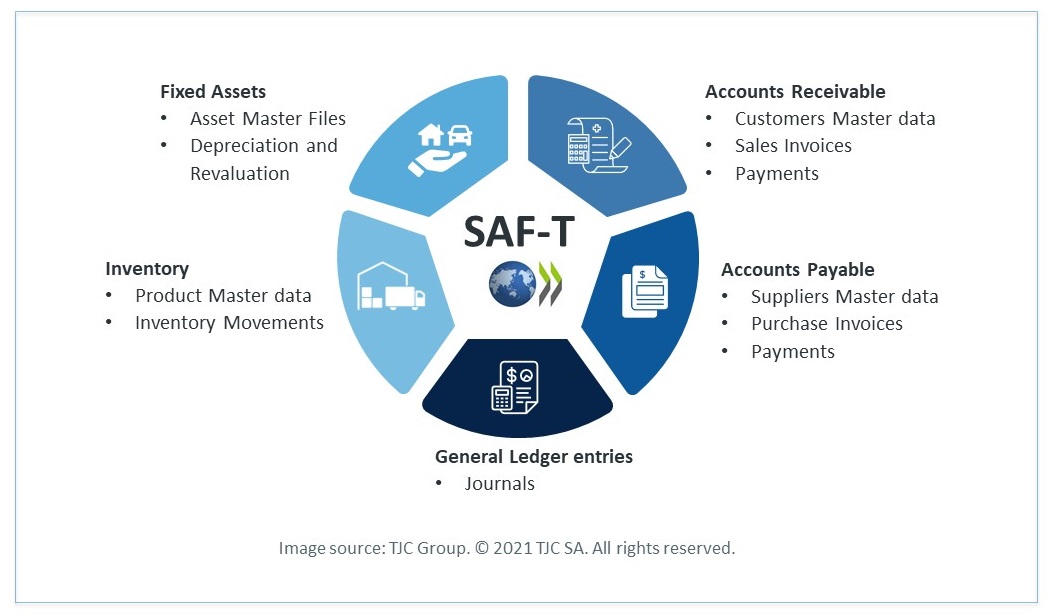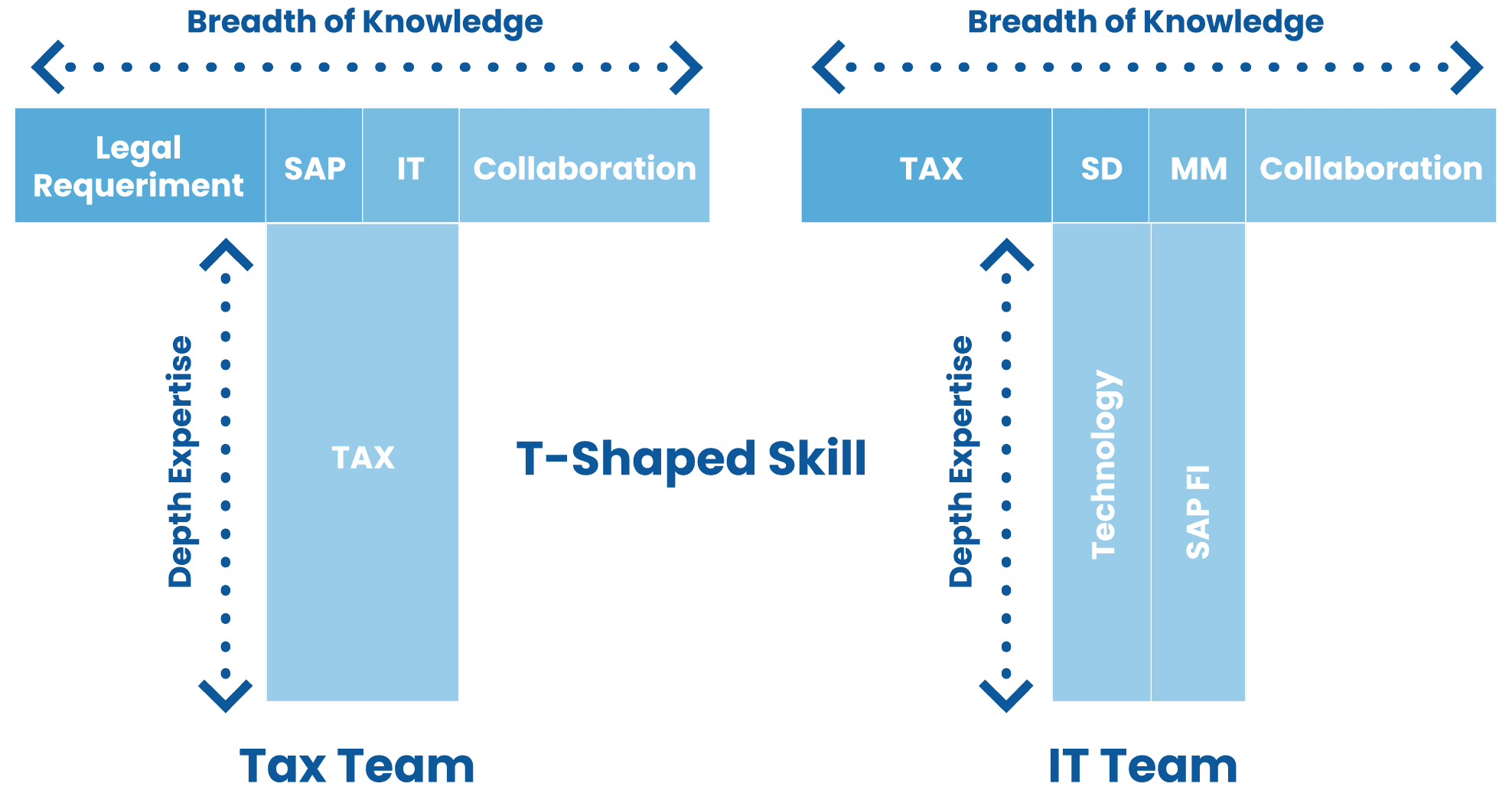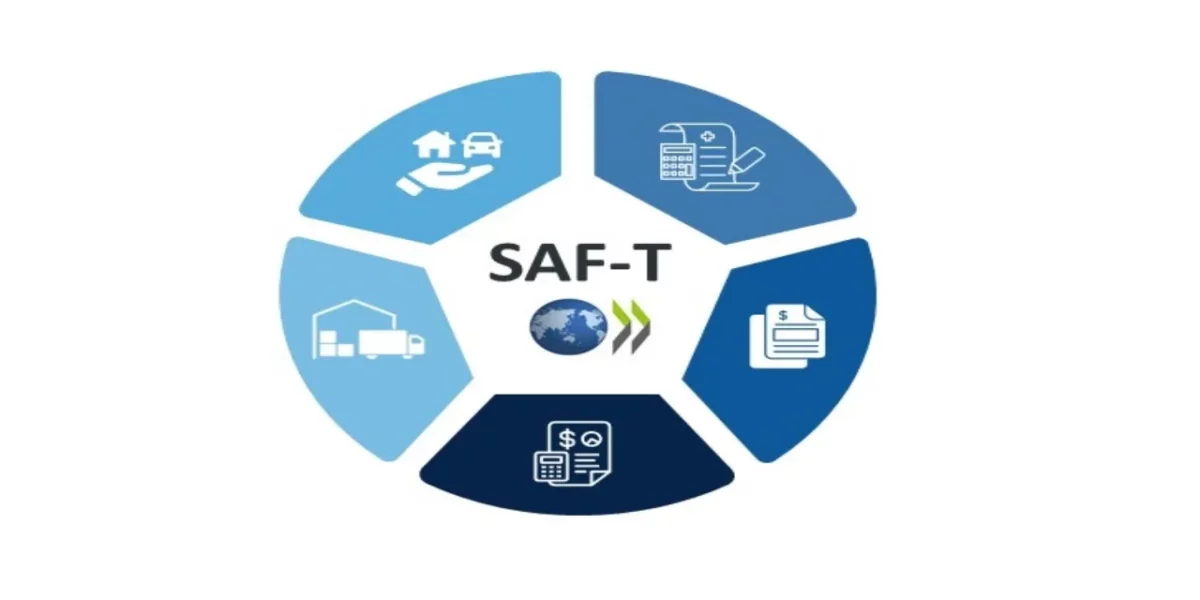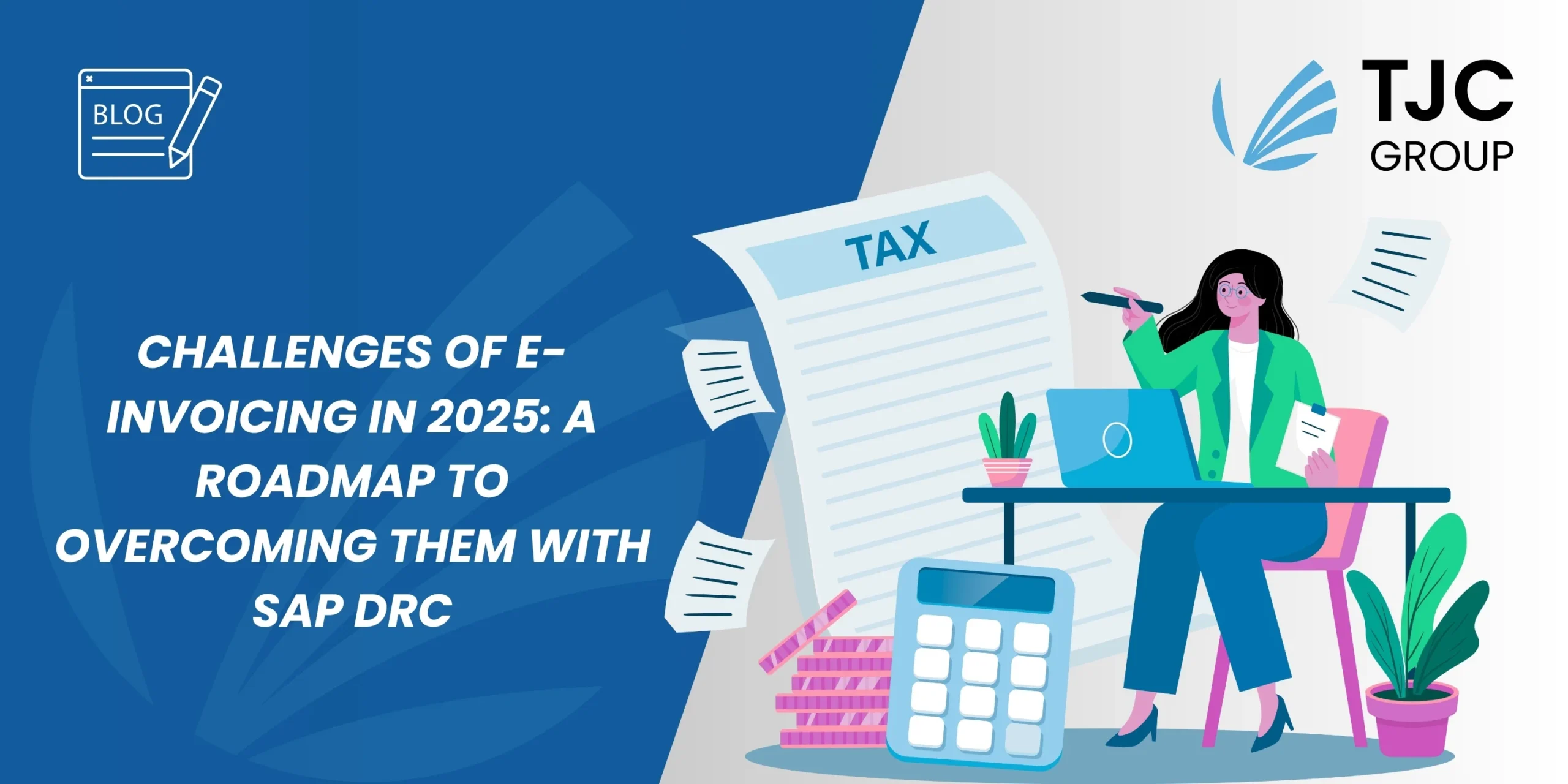Written by: Patchanok Kluabkaew
The commercial world has become more Volatile, Uncertain, Complex and Ambiguous (VUCA) than ever and, as a result regulatory, tax compliance is becoming more complex. Spurred on by the negative financial impact of the Covid pandemic, governments are continuing to digitalise their tax compliance processes at both a global and country level.
In this article we’ll take a look at trends in the SAF-T requirements, real-time VAT reporting and e-invoicing obligations in every European country. We’ll also see how this complexity has made having a selection of cross functional, ‘T-shaped’ skills essential for compliance projects today.

2020 was a very tough year for a lot of businesses. The commercial world has become more VUCA than ever and regulatory tax compliance is no exception. All the previous year’s progress made by governments to reduce their tax gaps and increase revenues is now in reverse. This is due to many factors, from the obvious deliberate fraud and tax evasion tactics, to inevitable higher rates of insolvency and bankruptcy among businesses that are genuinely struggling to cope with the pandemic.
Another big factor is mistakes made by the taxpayer – they cost a lot in lost tax revenues. Unintentional errors made by taxpayers is one of the reasons causing tax revenue losses to government bodies. It could be a human error, an error from the reporting software used by companies, among other technical reasons. For instance, EU governments projected they would lose around Euro 164bn in VAT revenues due to Covid-19. At the same time, massive stimulus packages have been launched to support affected businesses and help the economy recover from the recession.
A trend to digitisation
Spurred on by the negative financial impact of the Covid pandemic, regulators are continuing to digitalise their tax compliance processes at both a global and country level. Governments are embracing emerging technologies, such as Data Analytics, Artificial Intelligence (AI), Robotic Process Automation (RPA) and Machine Learning, to efficiently analyse big tax data and root out fraud.
Numerous new tax compliance initiatives have been launched in recent years and we can expect many more to follow in the near future. These developments are creating new challenges for businesses operating within the EU region to overcome and the situation is especially tricky for international companies with centralised IT services.

International SAF-T compliance adds to complexity
Standard Audit File for Tax (SAF-T) is one set of newly digitalised international regulations that are particularly problematic for SAP users to comply with across multiple jurisdictions. This is in part due to the breadth and diversity of the SAF-T regulations in place, compounded by growing mandates for real-time reporting and e-invoicing to minimise fraud.
Introduced by the OECD in 2005, the Standard Audit File for Tax (SAF-T) has always been voluntary and now been adopted by many countries across Europe. It was designed to help businesses minimise their compliance costs across multiple jurisdictions, by submitting a single standard reporting file rather than have multiple filings in their own local formats.
Typical elements of an SAF-T file will include the following:
- General Ledger entries – Journals
- Accounts Receivable – Customers Master data / Sales Invoices / Payments
- Accounts Payable – Suppliers Master data / Purchase Invoices / Payments
- Fixed Assets – Asset Master Files / Depreciation and Revaluation
- Inventory / Product Master data / Inventory Movements.

Real-time reporting and e-invoicing to cut losses
SAF-T reporting is already mandatory and e-invoicing, if not already mandatory will soon be in place across Europe. It is clear why. In the past, regulators would have to be content with returns being filed at the end of a period and then waiting for the relevant tax payment. With real-time reporting, they have a live data feed and can track every single business transaction before the tax becomes payable. They can project their future revenues.
Adding on e-invoicing goes a step further towards removing potential losses. Offering the ultimate in revenue protection, according to the B2B e-invoicing clearance model, e-invoices must be pre-approved by tax administration before issuing to customers.
To gain a detailed understanding of SAF-T requirements, real-time VAT reporting, and e-invoicing obligations in every European country, download the ebook “EU VAT Digitisation”.

Diversity of SAF-T models adopted
SAF-T itself is a good thing, but problems arise because of the lack of harmony at a European level when it comes to implementation. Individual countries have been allowed to decide whether to adopt the full SAF-T standards or certain elements and then enhance them with their own requirements. The result has been many different versions in operation in the 16 or so countries involved, and this diversity means multinational companies are struggling to deal with SAF-T compliance efficiently in a consistent way. It’s creating substantial burdens for both tax and IT teams.
In particular, it is difficult to generate correctly populated SAF-T files from SAP databases in the right formats and there is no margin for error. All the data must be consistently presented, with many countries issuing hefty penalties for non-compliance. Luckily, there are software solutions available to simplify SAF-T data extraction and report preparation to comply with local country regulations. Find out more SAF-T software.

Cross-functional, “T-shaped” skills
One of the key issues in achieving this target is having the right skills in house to handle Business to Government (B2G) compliance requirements and collaborate effectively across the different functions. This collaboration between tax and IT teams is an essential aspect of every successful project. Added to this, teams need to possess a combination of tax and technology knowledge to appreciate what is needed and provide accurate information to the tax authorities. Ultimately, a tax issue is also a business issue. If something is wrong with the data sent to tax administrators, it could be considered as tax evasion or VAT fraud and this will impact negatively on your organisation’s reputation.
Communications issues during tax compliance projects are also common, because tax compliance projects involve so many stakeholders – each of whom speaks their own professional ‘language’. It’s difficult for IT or SAP consultants to understand legal or tax terminology. Vice versa, tax experts may not understand SAP language or technical jargon. It’s a classic problem and leads to frequent misinterpretation, especially when dealing with tax and regulatory information. SAP requires data to be presented in very specific formats to firstly generate accurate legal reporting and then send that information via a black box interface to the relevant government body.

All this complexity has made having a selection of cross functional, ‘T-shaped’ skills essential for compliance projects today. Companies need skills across a broad range of competency areas, together with deep expertise in specific areas. For example, to satisfy the administrators’ latest compliance requirements, tax departments can’t just rely on their tax expertise to get by. They require additional skills – an understanding of current global and local legal requirements, some basic technology and SAP knowledge, plus the ability to work with IT departments and external SAP consultants.
The same is true of IT. An IT team might have a deep knowledge of technology and ERP systems like SAP, but can they understand what’s required by the tax authorities without an awareness of tax legislation and regulations knowledge? Governments intent on digital tax compliance want evidence of every single transaction made, not only in financial and accounting systems, but sales and purchase transactions, stock movements and asset reports. The breadth of information required in SAF-T reports highlights this.
Outsource B2G compliance to a specialist
Given that communication and collaboration are such important factors in a compliance project, any issues encountered should be treated as a clear wake-up call to review these departments’ skills profile. All this takes time, up-skilling and re-skilling cannot occur overnight and there are other constraints to consider.
One convenient solution is to work with an experienced B2G specialist to help your organisation acquire these T-shaped skills, but on an outsourced basis. A partner who can bridge the gap between your key stakeholders in tax management, relieve your tax compliance burden, improve collaboration, create synergy between your IT and Tax teams and ultimately, safeguard your reputation.
Get in touch with us to know more about B2G Officer services.










